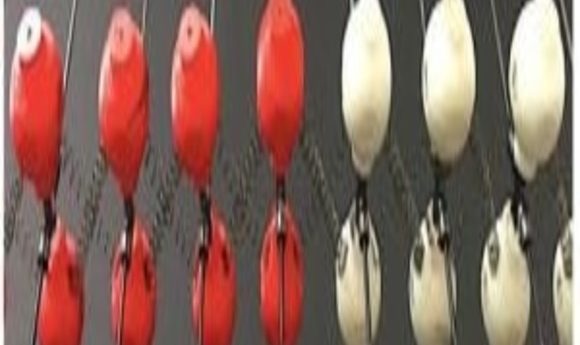Energy on the edge

A new structural model of dimer chains—such as microtubules—suggests that these structures can store energy at the surface or edges of a cell. Could this finding lead to better cancer therapies?

Dimer chains created from plastic and metal components were used to model topological edge modes that may occur in biological systems (1).
Cells comprise many complex molecular structures, including protein polymers that make up the cytoskeleton and contribute to cell shape and structural integrity. While the concept of cellular “tensegrity”—control of cell shape through interactions between tension (e.g., membrane tension) and compression elements (e.g., microtubules)—is well-known in structural biology, there is much about these structural interactions and their effects on cellular function and energetics that is not yet known.
Now, through theoretical and physical modeling studies, a team of researchers at the New Jersey Institute of Technology (NJIT) and Yeshiva University present data suggesting that microtubules may store quanta of vibrational energy known as topological phonon edges at the edges and surfaces of cells.
“This research could be used to explain cell behavior that is not yet fully understood,” said Camelia Prodan, associate professor of physics at NJIT and an author of the paper, in a press release.
Prodan and colleagues modelled this phenomenon by creating dimers consisting of two plastic-encapsulated brass balls joined by a plastic rod. They then assembled chains of these dimers under different configurations using springs to connect each dimer to the next. They suspended the chains, introduced sinusoidal vibrations, and measured dimer movement using accelerometers.
Using this system, the researchers observed a special type of topological edge mode known as a Majorana edge mode. Such edge modes, wrote the authors, are equivalent to subatomic particles known as fermions, and they are distinguished by their persistence even after breakage of the material.
“Remarkably, we believe these properties may be present in many materials composed of dimers, a chemical structure in which two similar masses are linked to one another through a rigid, nearly unstretchable bond,” said Prodan. “Dimers make up the building blocks of many cellular components and so it appears that storing energy in this way is a strategy that a variety of cells use on a daily basis in many living organisms.”
The authors propose that Majorana edge modes can be achieved by “tuning” dimer chains through changes in the dimer gyration radius. Tuning of microtubules and other protein dimer chains could be done by altering the protein conformation, perhaps by changing either the temperature or the composition of the surrounding liquid medium.
Prodan has big dreams for these tiny particles of energy. “Ultimately, we would like to create materials that mimic this property—the ability to restrict energy to an edge—to enhance earthquake resistance in buildings or the protection of bullet proof vests, for example,” she said. “We also think this property may be the key to a new generation of anti-cancer agents, because of the role topological phonons may play in cell division. Microtubules must fall apart before a cell can divide. Chemotherapy currently works by preventing cells from dividing, but recurrent cancers find a way to weaken these defenses.”
